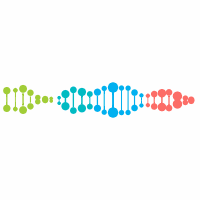Prof K. Subramaniam received his Ph.D. from the Indian Institute of Science in 1994. His postdoctoral training was at the Johns Hopkins University School of Medicine. Dr. Subramaniam joined the faculty of IIT - Kanpur in the Department Biological Sciences & Bioengineering in 2002. He was an International Senior Research Fellow of the Wellcome Trust during 2003-09. He joined the Department of Biotechnology, IIT Madras in 2014.
Research Interests
Most of our tissues undergo constant wear and tear. A group of cells, known as the adult stem cells, continuously generate new cells that help our tissues regenerate and repair. In a population of stem cells, while some undergo cell division to self-renew their population, others differentiate to produce the specialized cells that make up a particular tissue. Maintenance of a balance between self-renewal and differentiation is crucial - bias towards self-renewal can cause cancer, and bias towards differentiation will result in the loss of stem cells. My laboratory investigates how this balance is achieved in the case of germline stem cells.
Germline stem cells (GSCs) serve as an experimentally-convenient model to study adult stem cell systems. Like the other types of adult stem cells, GSCs are capable of self-renewal and differentiation; they can either replenish themselves through mitosis, or undergo meiotic differentiation to produce the gametes egg and sperm. However, unlike the other adult stem cell populations, GSCs are readily available in genetically-tractable model organisms, such as the free-living nematode Caenorhabditis elegans. Therefore, we have chosen C. elegans GSCs as an adult stem cell model and investigate how these cells choose between mitotic and meiotic fates. This approach allows us to employ the various genetic and biochemical strategies available for the C. elegans animal model to studying adult stem cells. Since the process of mitotic and meiotic fate decisions have been conserved in evolution, we hope our discoveries will be informative to similar studies in other species as well.
Currently, our work centres on the RNA-binding protein PUF-8, which belongs to the well-conserved PUF family of RNA regulators. PUF proteins control stem cell proliferation in diverse biological contexts in a number of species. Intriguingly, our results reveal that PUF-8 is essential for both proliferation and differentiation. We find that PUF-8 regulates diverse cellular processes to control germ cell decisions; it accomplishes this by both positively and negatively regulating the translation of certain mRNAs in the germline. In a genetic screen, we isolated new mutant alleles in a number of genes that genetically interact with PUF-8. Presently, we are investigating the biochemical basis of these genetic interactions, to understand how PUF-8 controls self-renewal and differentiation decisions in the germline.
Selected Publications:
Complete list of publications can be found on Scopus
-
A. Pon Ezhil Buvani and K. Subramaniam 2023.The C. elegans gene gvd-1 promotes late larval development and germ cell proliferation. Biology Open 12 (7): bio059978.
-
K. Revathi and K. Subramaniam 2022. An efficient negative selection marker for Mos1-mediated single-copy integration in Caenorhabditis elegans. microPublication Biology 10.17912/micropub.biology.000647. PMC ID: PMC9634457. PubMed ID: 36338151.
-
R. Vishnupriya, L. Thomas, L. Wahba, A. Fire and K. Subramaniam 2020. PLP-1 is essential for germ cell development and germline gene silencing in C. elegans. Development doi: 10.1242/dev.195578
-
G. Anil Kumar and K. Subramaniam 2018. PUF-8 facilitates homologous chromosome pairing by promoting proteasome activity during meiotic entry in C. elegans. Development doi:10.1242/dev.163949
-
K. Pushpa, G. Anil Kumar and K. Subramaniam 2017. Translational Control of Germ Cell Decisions. In Signaling-Mediated Control of Cell Division, Results and Problems in Cell Differentiation (ed. S. Arur), 59: 175-200. Springer International Publishing Switzerland
-
R. Maheshwari,K. Pushpa and K. Subramaniam 2016. A role for post-transcriptional control of ER dynamics and function in C. elegans germline stem cell maintenance. Development 143: 3097-3108.
-
A. Priti and K.Subramaniam 2015. PUF-8 Functions Redundantly with GLD-1 to Promote the Meiotic Progression of Spermatocytes in Caenorhabditis elegans. G3: Genes, Genomes, Genetics 5: 1675-1984.PDF FILE
-
S. Vaid, M. Ariz, A. Chaturbedi, G. Anil Kumar, and K. Subramaniam 2013. PUF-8 negatively regulates RAS/MAPK signalling to promote differentiation of C. elegans germ cells. Development 140: 1645-1654.PDF FILE
-
K. Pushpa, G. Anil Kumar, and K. Subramaniam 2013. PUF-8 and TCER-1 are essential for normal levels of several mRNAs in the C. elegans germline. Development 140: 1312-1320. PDF FILE
-
R. Mainpal, A. Priti and K. Subramaniam 2011. PUF-8 suppresses the somatic transcription factor PAL-1 expression in C. elegans germline stem cells. Dev Biol 360: 195-207. PDF FILE
-
M. Ariz, M. Rana and K. Subramaniam 2009. C. elegans RNA-binding proteins PUF-8 and MEX-3 function redundantly to promote germline stem cell mitosis. Dev Biol 326: 295-304.PDF FILE
-
S. Jadhav, M. Rana and K. Subramaniam 2008. Multiple maternal proteins coordinate to restrict the translation of C. elegans nanos-2 to primordial germ cells. Development 135: 1803-1812. PDF FILE

